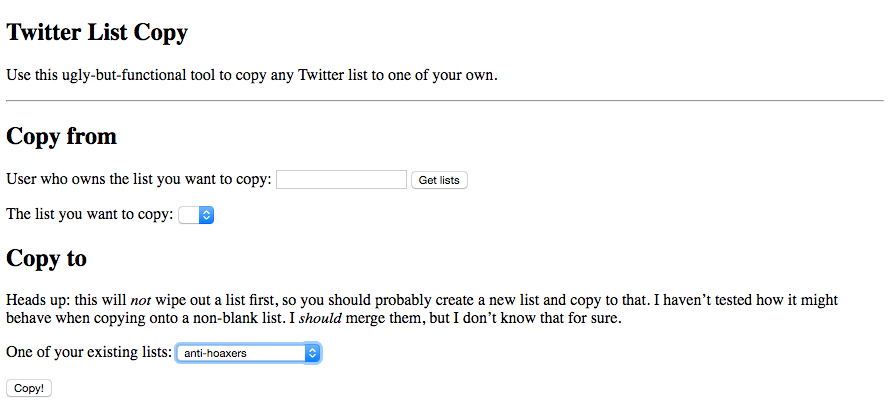When millions of pictures, videos and other words are uploaded to social media every minute, being able to find the newsworthy needle in a planet-sized haystack is an ever-important skill for modern journalists.
This kind of social newsgathering, can be broken down into two core elements: monitoring and discovery.
“Monitoring is helping you spot stuff you didn’t know was happening,” said Fergus Bell, founder of Dig Deeper Media. “Discovery and search is when you know something is happening and you’re focussing your attention on it.”
Joined by Storyful’s head of news, Mandy Jenkins, the pair described some tips and techniques for effective social newsgathering at the recent International Journalism Festival in Perugia.
“One of the first things you need to be doing as part of any social newsgathering process is having something set up in advance, before news breaks, that is going to help you monitor and look for that in the first place,” said Jenkins.
Her teams do this primarily through making lists of sources: with Twitter Lists, Facebook Interest Lists and using Feedly to monitor channels on YouTube, VKontakte and other platforms. Storyful now has lists of sources for every country, major city and ongoing story, she said, but building the lists is “a very, very manual process” she said.
“We’re a company monitoring the world on social media so we have to be tracking different lists of sources around the world.
“But if you have a specifically local focus, a political focus, a sporting focus, then there are lists that can be built for that to get as niche as you need to be, to make sure you’re very effective in honing in on what you’re looking for and that you will be one of the first people to know when something is going on.”
Thankfully, on Twitter, there are ways to find other people’s lists and either follow, copy or merge them.
Google’s site search function can help anyone look for Twitter users’ public lists. Want a list for Brussels? Try this:
site:twitter.com/*/lists/Brussels
The ‘*’ symbol asks Google to fill in the gaps in the URL, so will return any public list with “Brussels” in the title. Searching for “Bruxelles” and other language variations is also advisable to get more results.
Jenkins recommended the Twitter List Copy tool for copying and merging public lists from other people to get the best available range of sources.

Tweetdeck is the best way to monitor Twitter lists, said Bell, but both he and Jenkins stressed lists need constant maintenance and attention to remain useful.
Breaking news situations are the perfect opportunity to update lists on certain topics though, they agreed, adding individuals who may be relevant to the topic.
Tweetdeck is also a great tool for finding information and footage through Twitter once a story has broken, said Bell.
“We used to discover things by focussing on the agencies” in terms of external sources for information said Bell. “The agencies used to tell us something was happening and we used to go and search for that content. Or we’d hear it from our reporters and we’d hear it through the news desk…
“Now Tweetdeck, Twitter and other digital sources are your agencies, and the agencies are also on those digital sources.”
Journalists need to think about the kind of language eyewitnesses or sources on social media will use when talking about a particular event, he stressed, as this is very often not the same as a journalist would use when reporting.
“When we’re searching socially we have to think about how people are sharing this content,” said Bell, “and who they are sharing it with. They are not sharing it to be found by the media, they are sharing it with their friends, with people who know the area they are living in.”
Swear words, slang, exclamations and context-specific words will all be used, but the process can involve a lot of trial and error, said Jenkins.
“There’s a lot of opening many tabs and searches to make that discovery and search part of it work when you’re looking for those types of keywords,” she said, “as no two people are going to use the same exact wording. So you’re going to have to really expand your net to do that.”
Searching for information by location, as well as keywords, is also an important part of the process. The process is more complex on Twitter but there are a number of tools available to search other platforms by location.
Photodesk and Gramfeed are both useful tools for searching Instagram for newsrooms working on a budget, but other tools like SAMDesk, Geofeedia, Echosec, Banjo and GroundSignal are much more powerful, for a price.
“When thinking about tools for your newsroom you need to think about the scale of your operation,” said Bell.
“You should think about the geography and you should think about the networks you want to be searching” as some tools are more effective for certain contexts than others.
“Whenever you are implementing a new tool in a social newsgathering process you need to think about what that process will look like in your newsroom,” he said, “and that will help you determine which tools you may need.”
A crucial point to remember with social newsgathering, however, is verification of source material and the safety and well-being of any sources or eyewitnesses on the ground, said Bell.
“Our actions are public,” he said, “and considering the emotional state and safety of contributors is something very important for their well-being but also for your reputation as journalists.”
Jenkins and Bell were both involved in authoring the Online News Association’s Social Newsgathering Ethics Code, an area which is coming under increased scrutiny as the practise becomes more widespread. Eyewitness Media Hub released their guiding principles for handling eyewitness media last September, and Agence-France Presse recently updated their editorial standards and best practices to include social newsgathering.
“We can talk about tools and the best way to find these people but if you’re not backing it up with the best way to communicate with them it’s pointless,” said Bell, “and any money you might spend on tools is wasted.”
Watch the whole session below:



